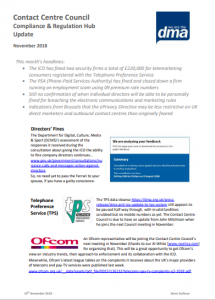0.47%
0.47%. That’s the progress that has been made against the target for rolling out second generation smart meters (“SMETS2”) as highlighted in a damming NAO report this morning.

The report goes on to say that as result of a series of failures in the roll-out programme the government’s 2020 completion target is “in tatters” and consumers will be faced with additional costs – added to their energy bills – of over £500m.
The technical and logistical problems of installing equipment in 30 million homes and business premises are obviously immense (even without the functionality problems many disgruntled consumers have experienced), but there’s a customer engagement challenge, too. No consumers are obliged to have smart meters installed, but the energy companies and installers are under government and regulator (Ofgem) pressure to meet targets.
User research indicates there are direct, financial benefits to the use of smart meters, especially the second generation variety, but the industry clearly hasn’t done all it can to persuade consumers of those benefits. Public awareness of smart metering is incredibly high (98% according to Smart Energy GB), but spontaneous consumer demand is low.
This suggests that old fashioned direct interaction and proactive contact have a vital part to play – be that face-to-face, via digital channels or voice. Whatever the customer engagement mix, contact centres will be crucial.
Energy supply and metering are esoteric areas, but customer engagement shouldn’t be.
Maybe energy suppliers and their partners should start by having a chat to my friends at the Contact Centre Panel.
November’s Regulation Hub Update for the DMA’s Contact Centre Council
DMACCCouncil-Compliance RegulationHubUpdate-November2018-ilovepdf-compressed

A summary of everything that’s happening in the world of regulation and compliance for UK contact centres – enforcement, fines, guidance, consultations and rumours from the ICO, Ofcom, the PSA, central government, PCI Security Standards Council, the Fundraising Regulator, the Direct Marketing Association and more…
-60%
“I’m so happy that my broadband and mobile providers’ service has improved” said no-one I ever recall meeting.
But our Number of the Week from Ofcom‘s data shows 7 years of falling consumer complaints.
So, what’s the cause? Is it due to better service, tougher regulation or maybe even lower barriers to switching?

£338,388.56

£338,388.56 per year
That’s the amount each person working in the contact centre contributed in additional revenue to their company, an Operations Director recently told me. His calculation was carefully worked out to only capture revenue that would not have been gained if customers weren’t in dialogue with the contact centre.
And this wasn’t a highly incentivised sales-focused operation; the primary function of the centre was to help its customers and deliver great service. Debates rage in so many organisations about the value – or otherwise – of the contact centre, but a calculated ‘price tag’ figure really helps to focus discussions!
Has anyone else managed to make a similar calculation?
-40%

-40%. That’s the year-on-year reduction in call volumes the manager of an inbound insurance sales call centre described to me, recently. This was a household name, with a strong brand, but with only very limited success in developing an online proposition or consciously nudging prospects to transact via self service.
No, this was just the impact of an innate channel shift shift by customers, taking the insurer’s new business revenue with them.
Lots of organisations are struggling to make the shift to where their potential customers are, but failing to do so is not an option.
699

699 miles, that’s how far Nerys Corfield and I have driven over 3 days this week, judging The UK Contact Centre Forum‘s Large Contact Centre of the Year award. It’s also involved the consumption of quite a few sandwiches, too much coffee and various in-car snacks…
However, the opportunity to meet so many enthused, enthusiastic people, so focused on better supporting and engaging their customers and colleagues, has been genuinely inspiring!
Thank you all and best of luck.
74%
74%. That’s our number of the week, courtesy of those nice people at Customer Plus.
On Wednesday I was musing to my fellow members of the DMA’s Contact Centre Council whether those of us who believe in the real business value to be gained by organisations properly engaging with their customers are just preaching to the converted, in a sort of ‘echo chamber’? However, reassurance came in Customer Plus’s article explaining that 74% of consumers have increased their spend due to good customer service. Which is good to hear!
You can sign up to Customer Plus’s weekly newsletter here and read the article here.

95%

95%.
That’s our number of the week, courtesy of a Olive Communications and Mitel event I attended the other day. Mitel are using Google’s Dialogflow natural language processing tool in its AI products, because Dialogflow has now achieved a 95% rate of comprehension of human speech.
That sounds impressive – even more so when it’s explained that that’s a better rate than we humans achieve!

GDPR: So, nobody died, but…
I’m writing this on 24th May 2018. The day after the new Data Protection Act received its Royal Assent and the day before the day we’ve all been waiting for, GDPR implementation day, 25th May.
Don’t 24 weeks fly by when you’re having GDPR fun?
This week I was intending to provide another bite-sized piece of advice to help you on your way to becoming GDPR compliant, especially from a customer experience perspective. However, as the nation has been floundering under a growing tsunami of last-minute ‘re-permission’ or ‘re-consent’ emails from companies, charities, arts and community organisations for the past few days, I can’t avoid looking at that phenomenon.

Will the GDPR make me a millionaire?
The implementation date for the GDPR is only a week away. If you have been following this series of weekly ‘Just One Thing This Week’ blogs then we hope you’re fairly well prepared – or at least know what you still need to work on.
Anyway, give yourself a minor diversion and read about my Cunning Plan…
I’ve been doing some sums.
The Office for National Statistics (www.ons.gov.uk) reckons there are c.47,000 UK enterprises that employ 50 or more people. Let’s use that as a very rough proxy for the number of UK firms engaging in some sort of formal marketing and customer management/experience activities.
Read more …



